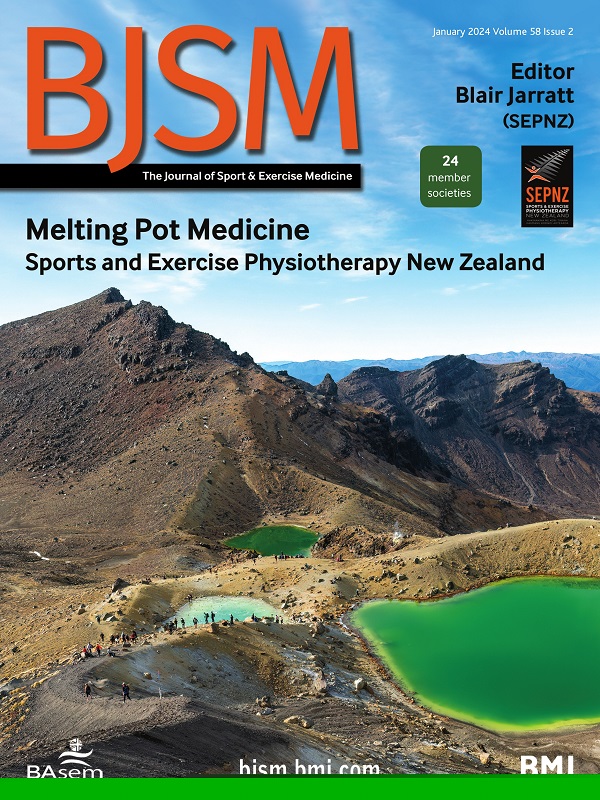瘫痪到残废:脊髓损伤后的支撑力量
IF 16.2
1区 医学
Q1 SPORT SCIENCES
引用次数: 0
摘要
尽管我从小就是一个狂热的运动员,但我从来没有真正遇到过伤病。当我踢足球时,我得到了“罗伊·基恩”的绰号,当我打橄榄球时,我得到了“麦克卡利”的绰号。这些绰号通常是因为我喜欢把自己的身体放在大多数人不会去的地方。20岁那年,我的整个人生都改变了。在没有任何征兆的情况下,我于2017年6月3日昏倒,后来被诊断为第十节胸椎完全性脊髓损伤。经过几个月的医疗预约,医生确定了一种叫做横断面脊髓炎的神经系统疾病,这种疾病会导致脊髓周围的炎症。我瘫痪了,失去了双腿的功能,失去了大部分核心肌肉,无法控制我的肠子和膀胱。没有人帮助,我无法站立或坐着。我上不了厕所。我意识到,生活中有那么多简单的快乐,我曾经认为是理所当然的。我很害怕。我感到很脆弱,最终,我认为我不值得再活下去了,经常认为没有我这个世界会更美好。我没有意识到的是,我的脊髓损伤是一个不可否认的目标的开始,向世界展示面对逆境的可能性。这一目标诞生于WheelPower Inter Spinal Unit Games(一项让最近脊髓受伤的人有机会尝试新运动的比赛)。起初,我在残疾人运动中挣扎,因为我对受伤前的运动有着如此美好的回忆。直到最后一天,我被要求参加残疾人举重比赛。我赢了,并立刻坠入爱河。最终,举重救了我的命。它不仅能让我和……本文章由计算机程序翻译,如有差异,请以英文原文为准。
Paralysed to Paralympian: the strength of support following a spinal cord injury
Despite being an avid sportsman growing up, injuries and illnesses were never really something I encountered. I acquired nicknames such as ‘Roy Keane’ when I played football and ‘McCarry’ when I played rugby. These nicknames usually arose from my love for getting stuck in and putting my body in places most wouldn’t. At age 20, my whole life changed. Without warning, I collapsed on 3 June 2017, later diagnosed with a complete spinal cord injury at my 10th thoracic vertebrae. After months of medical appointments, doctors identified a neurological condition called transverse myelitis that causes inflammation around the spinal cord. I was left paralysed, losing the use of my legs, most of my core muscles and control over my bowels and bladder. I couldn’t stand or sit unassisted. I couldn’t take myself to the toilet. I realised that there were so many of life’s simple pleasures that I had taken for granted. I was scared. I felt vulnerable, and, ultimately, I believed that I wasn’t worthy of living life anymore, often thinking the world would be a better place without me in it. What I didn’t realise was that my spinal cord injury was the start of an undeniable purpose, showing the world what is possible in the face of adversity. This purpose was born at the WheelPower Inter Spinal Unit Games (a competition that gives people the opportunity to try new sports following a recent spinal cord injury). Initially, I struggled with para-sports because I had such fond memories of playing sports before my injury. That was until I was asked to compete in the para powerlifting event on the last day. I won and instantly fell in love. Ultimately, para powerlifting saved my life. Not only did it allow me to go toe-to-toe with …
求助全文
通过发布文献求助,成功后即可免费获取论文全文。
去求助
来源期刊
CiteScore
27.10
自引率
4.90%
发文量
217
审稿时长
3-8 weeks
期刊介绍:
The British Journal of Sports Medicine (BJSM) is a dynamic platform that presents groundbreaking research, thought-provoking reviews, and meaningful discussions on sport and exercise medicine. Our focus encompasses various clinically-relevant aspects such as physiotherapy, physical therapy, and rehabilitation. With an aim to foster innovation, education, and knowledge translation, we strive to bridge the gap between research and practical implementation in the field. Our multi-media approach, including web, print, video, and audio resources, along with our active presence on social media, connects a global community of healthcare professionals dedicated to treating active individuals.

 求助内容:
求助内容: 应助结果提醒方式:
应助结果提醒方式:


